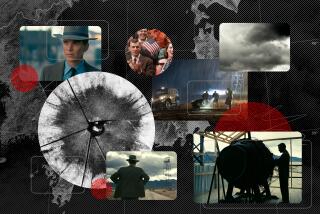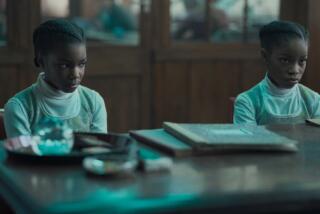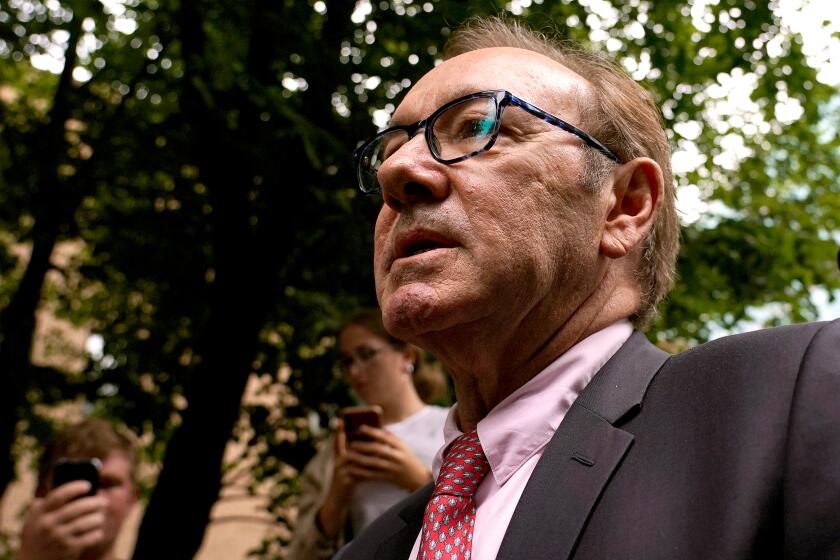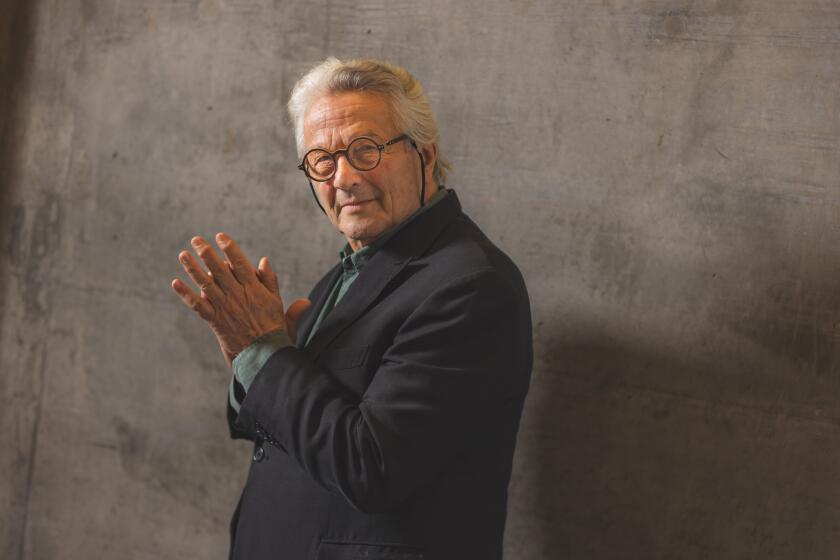RECLAIMING THE DARKER SIDE OF BOND
James Bond could hardly be more British. He has been played by a Scot (Sean Connery), two Englishmen (David Niven as Sir James Bond in “Casino Royale,” and Roger Moore), a colonial (Australian George Lazenby in “On Her Majesty’s Secret Service” in 1969), and now a Welshman, Timothy Dalton, late of Colwyn Bay.
Albert (Cubby) Broccoli, who has been the principal producer or co-producer of the main James Bond series since its beginnings in 1962, was recalling not long ago that yet another Englishman had been asked to play 007 before the search settled on Connery.
“We considered Cary Grant,” Broccoli said, “and we approached him, but he wouldn’t do it.” The idea of Grant was appealing to Bond’s creator, Ian Fleming, who was initially not keen on the then relatively little-known Connery. But once Fleming saw Connery in action, he became an enthusiastic fan.
When the Bond films began to resemble the Spindletop oil field in profitability, Broccoli ran into Grant, who said with a philosophical sigh, “To think I turned this all down.”
It is hard to recall a fictional character this side of Sherlock Holmes who has remained fundamentally intact while being played on screen by such an assortment of actors. Fleming, on what was a fairly larky excursion in fiction, created an uncommonly durable original.
In the most recent films, Roger Moore had taken Bond to the edge of camp and beyond, making him a character of such lounge-lizard insouciance that he sometimes seemed simply to be strolling through the fun house of gadgets, special effects and undeniably spectacular stunts provided by the series’ ever expanding budgets.
Whether the critics embrace “The Living Daylights,” the 15th Broccoli Bond, which opens Friday, or whether they conclude that a quarter-century of variations on a theme more than suffices, there is likely to be some agreement that Dalton, intense and devilishly handsome, is a return to a rather darker and, for want of a better term, more sincere Bond, distinctively Dalton’s own, but nearer to Connery than to Moore.
The jokes are still in place; 007 is obviously not contemplating celibacy in the near future (although he seems to have become a one-woman man), and as always the physical feats would exhaust a whole company of commandos. But Dalton conveys a gravity that, like the early Connery, is also closer to Fleming’s initial literary conception of Bond, cruel-eyed and non-wisecracking, and further from the comic book exaggerations of heroes, villains and events toward which the books, like the films, had been heading.
Dalton says he was first asked about playing James Bond several years ago. Sean Connery was wanting out before he disappeared inside 007 forever.
“I can’t say I was offered it, but a certain interest was expressed,” Dalton said at lunch during a spring visit to Los Angeles. “But I felt I was far too young. And Sean Connery was absolutely wonderful. At the age of 25, that’s the sort of Bond you don’t follow.”
When the firm offer came to do “The Living Daylights” (with options for further outings if the marketplace is willing) Dalton was busy rehearsing with Vanessa Redgrave for what became a very successful repertory season at the Haymarket Theatre, alternating productions of “Antony and Cleopatra” and “Taming of the Shrew,” and he had to turn down the role.
But production of “The Living Daylights” was delayed. By the time it was again ready to go, Dalton was committed to play Basil St. John in the film version of “Brenda Starr,” shooting in Florida with Brooke Shields as the comic strip newsgal and with Robert Ellis Miller directing. This time the scheduling was tight but workable.
Miller says, “On a Friday night at 6, I said, ‘Cut and print; that’s it and bye-bye,’ and Timothy was off to the airport and started shooting Bond on the Monday.” Peter O’Toole had introduced director Miller to Dalton in London in 1968, just after O’Toole and Dalton finished “The Lion in Winter,” in which Dalton was King Philip of France. Miller finds Dalton “a terrific young actor--inventive, cooperative, an actor who brings a lot to you.”
Dalton made his stage debut in 1964 in a small part in a National Youth Theatre production of “Coriolanus” and studied at the Royal Academy of Dramatic Arts (RADA). He received an important break in 1966, the part of Malcolm in a Royal Court Theatre production of “Little Malcolm and His Struggle Against the Eunuchs” (which was later filmed with John Hurt as Malcolm).
On the strength of his Malcolm, Dalton was invited to join the Birmingham Repertory Theatre. His success there, including more Shakespeare, led to the casting in “The Lion in Winter” and a succession of period films, including “Cromwell,” “Mary Queen of Scots” (he was Lord Darnley to Vanessa Redgrave’s Mary) and the TV version of “Wuthering Heights.”
The film reference books variously characterize Dalton as solemn or saturnine, and he does convey an intense dedication to whatever is on at the moment, although Robert Ellis Miller says Dalton shows a flair for stylish comedy in “Brenda Starr.” He has certainly done a wilder variety of acting chores than the previous Bonds, from all the Shakespeare to “Flash Gordon,” the “Sins” miniseries with Joan Collins and “Sextette,” with Mae West, his first Hollywood film.
(“Sextette” was a fine experience, Dalton says. “Mae was remarkable, even at her age, fascinating to look at and a great wit. She regaled us with stories of Broadway before the First World War; it was like living in another world. She was extraordinary and bizarre, and in no way sad.”)
Following three or four other actors into a part the world has taken to its bosom is an interesting challenge. Hamlets face it all the time, of course. One London drama critic claims to have seen three dozen actors doing Hamlet.
Of his Bond, Dalton says, “I’m going to be different, and obviously I’m determined not to be just physically different. Any two people, even if they had the same ideas about the part, would play it differently.
“It’s not going to be me . It’s hopefully going to be something of the essence that Fleming is writing about. . . . It seems to me that the best of the books was the first book, ‘Casino Royale.’ It was a very, very different kind of a book to be a best seller. It is a spy story but it’s a spy story that’s full of confusion--moral confusion, ethical confusion. It’s Graham Greene country.
“When you end the book you find yourself thinking of Fleming the man, because he was inventing Bond, who is brought face to face with the complexities and realities and difficulties of life, the rights and wrongs.
“Bond is a man who doesn’t like what he does. He’s a man who now, because of his age, no longer sees things in black and white, in easy rights and wrongs. He knows that a man who kills is just himself, working for the other side, a man with a job. He knows that politically speaking a friend becomes an enemy in a couple of years and an enemy becomes a friend.
“I think Bond is deeply prone to a moral and an ethical apathy. It’s often referred to in the Bond books--it’s the first time I’d ever heard the word--as accidie (a kind of moral torpor or exhaustion).
“When Bond wants to give up and get out, a French colleague says--this is only paraphrased--if you find it all too confusing and wrong and uncertain, don’t go for the spies, go for the evil that makes the spies. . . . All the Bond stories are about a man who goes after a very clearly fixed target of evil.”
The Bond stories, a phenomenon of the Cold War ‘60s, first fixed handily on the Soviet Union (Redland in the ciphers) as the target of evil. Soon enough the apolitical villains appeared, content merely to rule the world in the name of naked power and greed. In “The Living Daylights,” Redland and Whiteland are both being manipulated by a blue meanie of a munitions dealer.
“The stories,” Dalton says, “carry with them some traces of mythology, Knights of the Round Table, St. George and the Dragon. And that’s a trace of mythology.” Yet the Bond of Bond XV, as Dalton sees him, is not a super-hero in the traditional sense. He’s a survivor who puts his life at risk for what he believes to be right but he also has, thanks to Fleming, everyday vices--smoking three packs a day, gambling, drinking, wenching--that serve, Dalton believes, “to root him amongst us.” At heart, he says, this Bond, at least, is “an ordinary man with special skills and certain qualities.”
“The Living Daylights” evidently came in at about $30 million, par for the recent Bond films, all of which have been profitable. That amount is a staggering leap from “Dr. No,” the first in the series, which was budgeted at an even million and came in for just a fraction over that. “They tried to cut us back to $850,000, but we resisted,” Cubby Broccoli said recently.
Broccoli insists that he knew the film, and Bond, would be a hit, although not everybody agreed, and he still thinks the first release pattern could have been more dynamic. “I knew the film would be a success. What took us all by surprise was the size of the success.”
The Bonds are one of the most profitable film series in history. “The problem,” Broccoli says, “has been to keep topping ourselves.” The incredible ski-jump that was the opening sequence in “The Spy Who Loved Me” was an untoppable case in point. It was shot on Baffin Island, and the second unit had to wait two weeks before conditions were right. The takeoff cliff was reachable only by helicopter and the skier, Rick Sylvester, who did the loop-the-loop and then completed his descent by a parachute in the form of a British flag, did it in only one take (although he was prepared to do it again). The budget would have sufficed for a whole, small movie. John Glen, who directed “The Living Daylights,” handled the second unit on the ski jump.
The Bonds have become a family affair. Broccoli’s daughter, Barbara, did some second-unit directing on the new film, and his stepson, Michael G. Wilson, an electrical engineer turned lawyer, joined the firm in 1972 and was co-producer and co-writer on “The Living Daylights.”
A quarter-century is an amazing life span for a series. Two generations of filmgoers have been born since “Dr. No” was released. The world has gone through several plots of its own, most of them violent. The question, again, will be to see whether 007 has worn out his welcome, or whether Timothy Dalton and some slight course corrections in the Bond coordinates will constitute a renewal of vitality and audience interest. I wouldn’t bet against 007 for a minute.
“If the film makes a dollar,” Cubby Broccoli has said, “there’ll be another.”
Timothy Dalton:
‘Bond is a man who doesn’t like what he does. He’s a man who now, because of his age, no longer sees things in black and white, in easy rights and wrongs. He knows that a man who kills is just himself, working for the other side, a man with a job.’
More to Read
Only good movies
Get the Indie Focus newsletter, Mark Olsen's weekly guide to the world of cinema.
You may occasionally receive promotional content from the Los Angeles Times.






